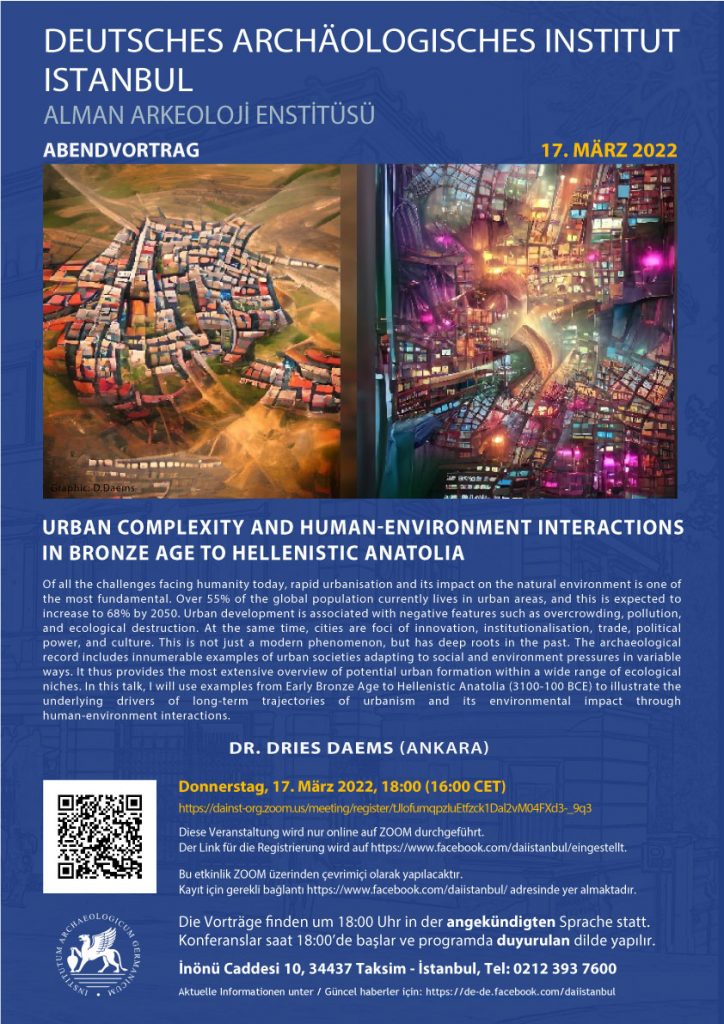Of all the challenges facing humanity today, rapid urbanisation and its impact on the natural environment is one of the most fundamental. Over 55% of the global population currently lives in urban areas, and this is expected to increase to 68% by 2050. Urban development is associated with negative features such as overcrowding, pollution, and ecological destruction. At the same time, cities are foci of innovation, institutionalisation, trade, political power, and culture. This is not just a modern phenomenon, but has deep roots in the past. The archaeological record includes innumerable examples of urban societies adapting to social and environment pressures in variable ways. It thus provides the most extensive overview of potential urban formation within a wide range of ecological niches. In this talk, I will use examples from Early Bronze Age to Hellenistic Anatolia (3100-100 BCE) to illustrate the underlying drivers of long-term trajectories of urbanism and its environmental impact through human-environment interactions.

Graphic: B. Akan
Thursday, 17.03.2022, 18:00 (16:00 CET)
Dr. Dries Daems (ANKARA)
The lecture will be held online via Zoom in English.
Registration link:
https://dainst-org.zoom.us/meeting/register/tJIofumqpzIuEtfzck1Dal2vM04FXd3-_9q3
